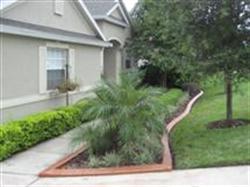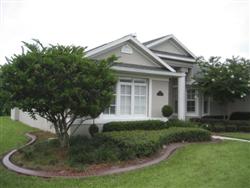







Kwik Kerb Curbing
Landscape Design
Ground Cover
Landscape Lighting
Pressure Cleaning
Irrigation
Patios, Walks and Walls
Decks, Arbors and Pergolas
Recent Projects


Landscaping Palms
Landscapes of Florida would like to share some suggestion regarding sub-tropical landscape is based on quality trees and palms as the "foundation" of the landscaping. We would like the opportunity to meet with you and discuss your vision and how we can turn it into reality.


In Florida, first you select native trees such as Live Oaks. Next you select quality palms. If you can, include flowering trees and/or fruit trees. Keep seasonal flowering and fruiting times in mind. Using significant, valuable, attractive foundation plantings is the first step.
Make it a point to plant at least two or three "important" trees or palms as part of your mix. What's important? We stress trees and palms which not only grow but grow more valuable over time.
For example, a Pritchardia pacifica retails for about $50 per foot. If you plant a young four-footer for $200 you'll enjoy seeing it grow into a mature specimen palm worth perhaps $4,000 in less than 10 years or about 20X your money invested.
Planting a fine palm creates a special unique landscaping while year after year adding significant value to your property. Common plants are...common / ordinary /cheap.
If you have certain "garbage" trees or palms in your landscape, have them all removed before you begin a new landscape plan.
For example, always extract black olives, ficus and all Sheffleras. These are on the State of Florida's "don't plant" list anyhow. If you have these plantings and they're not a problem, rest assured they will be a (bigger) problem and more expensive in the future. Just get rid of them all now.
Most home owners sweat the small stuff – like shrubs and hedges and flowers. These plantings are relatively unimportant. Shrubs and flowers are cheap and are easily replaced. Unlike trees and palms, growth over time rarely enhances their value significantly. You should plant the "small stuff" last because it is the least important.
Also, not all landscaping should be plants ...."objects" in your yard such as swings, benches, large terra cotta pots and statues (to name a few) look great integrated into the landscaping.
There are a few tips:
Provide the full space required for a mature tree or palm. Don't jam plantings so close they will interfere with each other as they grow.
Provide food. The State of Florida (U. of Florida) now recommends a minimum of 6X a year fertilization for palms for example. You don't use more fertilizer. You use the same amount over the year so you feed less each time, but more often
Use ONLY the best fertilizers (the most expensive) which include 6-8 minor elements (12 is even better). Never buy cheap fertilizer
Every tree and every palm should be planted in a planned bed, not in the grass
Our typical St. Augustine grasses creep on runners and soon invade the base of trees and palms. Lawnmen use weed whackers and slash the base of trees and palms 2X a month when they cut your grass. In no time they have severed the bark which can let in fungus and disease. Weed whacking will eventually kill your trees and palms. The only way to protect them is the create a bed, then maintain the bed perimeter
Don't use pesticides. Almost all attacks are temporary and no action is required. Before you use any pesticide, first get authoritative professional analysis and advice
Look up before you plant. Wires are everywhere and both FPL and Bell South are ruthless about hacking trees out of the way of their wires. Select trees and palms that will NEVER interfere with their wires
Plant everything with (real) manure as a soil enhancement. We like Black Cow best and using manure in the planting hole is a Master Gardener secret to success. Go ahead and use a whole 50 lb. bag for each important tree and palm.
Summary
1. Select important foundation plantings first
2. Extract all garbage planting before you plant
3. Use a minimum of 2-3 unique trees or palms
4. Allow room for each mature specimen's size
5. Feed properly and more feed often
6. Plant everything in beds
Florida Cold Hardy Palm Trees
- Cold Hardy Palm Trees
- True Date Palm Tree (Phoenix dactylifera)
- Canary Island Date Palm Tree (Phoenix canariensis)
- Texas Sabal Palm Tree (Sabal texana, mexicana)
- Mediterranean Fan Palm Tree (Chamaerops humilis)
- California Fan Palm Tree (Washingtonia filifera)
- Windmill Palm Tree (Trachycarpus fortunei)
- Pindo Palm Tree (Butia capitata)
- Sago Palms (Cycas revoluta)
- Mexican Fan Palm Tree (Washingtonia robusta)
- Queen Palm Tree (Syagrus romanzoffiana)

